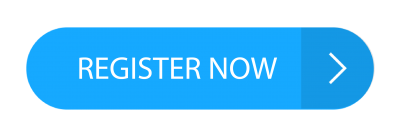SEGREGATION EDUCATION FOR ADHD
Abstract
ABSTRACT
Education is an effort to improve the quality of human resources. Education can be obtained through formal and non-formal institutions. In formal educational institutions there are regular classes and inclusion classes. Where in this class there are not only regular children but also some children with special needs. One of them is Segregated Education which has been going on for more than a century, since the start of education for blind children in 1901 in Bandung (Baharun, Hasan, 2018), which is the process of separating one group from another group or isolating or ostracizing. In relation to Special Education (PLB), segregation education is an education system for children with special needs that is separate from the regular children's education service system (Casmini, 2007). Like children with special needs ADHD (Attention Deficit Hyperactivity Disorder). ADHD (Attention Deficit Hyperactivity Disorder) is a neurological disorder that generally begins in children and usually lasts into adulthood. This disorder can also affect aspects of the sufferer's life, such as social relationships, problems in academics, career support, and experiencing various levels of emotional instability. Education is not only for regular children, but children with special needs also have the right to get a decent school. This also aims to ensure that as Indonesian citizens who uphold the values of justice in Pancasila can be implemented well.
Keywords
Full Text:
PDFReferences
Nasution, F., Anggraini, LY, & Putri, K. (2022). Definition of Education, Special School Education System, and Types of Special Schools. Journal of Nonformal Education, 3(2), 422-427.
Gunawan, L. (2021). Interpersonal Communication in Children with Attention Deficit Hyperactivity Disorder (ADHD). Psycho Education, 19(1), 49-68.
Sirait, ZAF, & Halawa, T. (2023). Active Learning Methods in Special School Contexts. Journal of Cross Knowledge, 1(2), 29-37.
Jannah, M., & Sihkabuden, S. (2016). Implementation of the Disabled Student Assistance Model by the Center for Disability Studies and Services (PSLD) Universitas Brawijaya Malang. Journal of Orthopedagogia, 3(1), 45-50.
Mutiara, S., Putri, AS, Sari, TP, Hidayati, Y., & Asvio, N. (2023). Characteristics and models of Islamic guidance or education for disabled crew members in the Lubuk Lintang Gang Macang Besar sub-district community RT 07 RW 03. Journal of Educational Studies (JKIP), 4(1), 113-124
AF, MA, & Nurachadijat, K. (2023). Effectiveness of Special School Education (SLB)-A Budi Nurani Sukabumi City in the Review of Inclusive Education. Journal of Learning Innovation, Evaluation and Development (JIEPP), 3(1), 1-9.
Baharun, Hasan, RA (2018). Special Needs in Perspective. Study program PGMI, 5 Number 1(3), 60.
Botha, J., & Kourkoutas, E. (2016). A community of practice as an inclusive model support children with social, emotional and behavioral difficulties in school contexts. International Journal of Inclusive Education, 20(7), 784–799.
Casmini, M. (2007). Segregation education. Bandung: Indonesian Education University. Desiningrum, DR (2016). Psychology of Children with Special Needs. In Ministry of National Education (print
pe). Yogyakarta: Psychoscience Ruko Jambusari 7A Yogyakarta.
Caroline, S. (2014). Interpersonal Communication Between Therapist and Child People with ADHD. ECommunication Journal, Vol. 2 No. 2
Fatwikiningsih, N. (2014). Improving Language Skills Through the Method of Communicating with Pictures in Children with Characteristics of Attention Deficit Disorder and Hyperactivity. Journal of Psychological Science and Practice, Vol. 2(3), 226-242.
Hamza, A. (2019). Literature Writing Method. Malang: Archipelago Literacy. Hermoyo, R.P. (2014). Forming Effective Communication During Early Childhood Development. Journal of Pedagogy, Vol. 1 No. 1.
Hidayah, Annisa. (2017). Learning Communication Process Between Teachers and Students with ADHD (Thesis). FKIP Journal, Djuanda University, Bogor.
Cole, Peter. & Chan, Lorna, (1990) Methods and Strategies for Special Education. Australia: Prentice Hall of Australia Pty Ltd.
Effendi, Mohammad. (2016) Introduction to Education for Children with Special Needs Module. Malang: State University of Malang.
Hatu, RA (2010) Empowerment and Social Assistance in Society (A Theoretical Study), 7 (4). (Online), (http://download.portalgaruda.org), accessed 30 January 2017.
Ishartiwi. 2013. Journal of Special Education. Implementation of Inclusive Education for Children with Special Needs.
Irawati, I. (2020). The urgency of multicultural education, segregation education and inclusion education in Indonesia. Instructional Development Journal, 3(3), 177-187.
Supriyanto, E. (2012). Development of a Special Smart Education Curriculum. Yogyakarta: Student Library
Worrell, F.C., & Erwin, J.O. (2011). Best Practices in Identifying Students for Gifted and Talented Education Programs. Journal of Applied School Psychology, 27(4), 319–340.
Baihaqi and Sugiarmin. 2008. Understanding and Helping Children with ADHD. Bandung. PT Refika Aditama.
Delphie, Bandi. 2009. Guide to Therapeutic Games for Children with Special Needs in Inclusive Settings. Sleman. KTSP.
Kewley, Geoff and Latham, Pauline.2010. 100 Ideas for Guiding ADHD Children. Jakarta. Erlangga Group.
Zaviera, Ferdinand. 2009. Hyperactive Children. Yogyakarta. Inner voice.
Mirnawati, M., & Amka, A. (2019). Education of children with ADHD (attention deficit hyperactivity disorder).








.png)